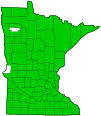Spotted touch-me-not
(Impatiens capensis)
Conservation • Wetland • Description • Habitat • Ecology • Use • Distribution • Taxonomy
Conservation Status |
|||
| IUCN Red List | not listed |
||
| NatureServe | N5 - Secure SNR - Unranked |
||
| Minnesota | not listed |
||
Wetland Indicator Status |
|||
| Great Plains | FACW - Facultative wetland |
||
| Midwest | FACW - Facultative wetland |
||
| Northcentral & Northeast | FACW - Facultative wetland |
||
Description |
Spotted touch-me-not, also called orange jewelweed, is a 2′ to 6′ tall, erect, annual forb that rises from a shallow, branching taproot. It often forms colonies. The stems are erect, hairless, branched above the middle, light green to light reddish green, and translucent. They are succulent, hollow, and easily broken. The leaves are alternate, egg-shaped or elliptic, and thin. They are 1″ to 4″ long and up to 2″ wide, less than 3 times longer than wide. They are on leaf stalks up to 2″ long, the stalk usually shorter than the blade. The upper surface is dull green and hairless. The lower surface is hairless. The margins have rounded, forward-pointing teeth. The teeth are tipped with a short, sharp, whitish, abrupt point. The leaves on flowering branches are no more than 3⅛″ long. The inflorescence is a widely-spreading cluster of 1 to 3 flowers rising from the upper leaf axils. The flowers are held horizontally on ¾″ to 1⅛″ long, drooping stalks. The flowers are ¾″ to 1⅛″ long. There are 3 petal-like sepals and 5 petals. The upper 2 sepals are light green to light yellow, small, and located behind the upper lip. The lower sepal is light orange and shiny. It is modified to form a cone-shaped tube ending in a narrow nectar spur. The cone-shaped portion of the sepal is longer than it is wide. The spur is ¼″ to ⅜″ long, hairless, curved forward, and held close to the body of the flower. The petals are orange with reddish-brown spots. One petal forms the upper lip. It is short and wide and curves upward. The four remaining petals are fused in pairs to form two lobed, lateral petals. The lobes of these petals spread outwards forming a pair of landing pads for pollinating insects. Near the upper lip are 5 stamens fused together forming a cap over the pistil. There is no floral scent. The fruit is a slender, hairless, 5-valved capsule about ¾″ long. When ripe it explodes if touched or jarred, releasing its seeds. |
Height |
2′ to 6′ |
Flower Color |
Orange |
Similar Species |
Pale touch-me-not (Impatiens pallida) is usually a larger plant. The leaves on flowering branches are usually more than 3⅛″ long. The flowers are larger, 1″ to 1½″ long. The tube formed by the lower sepal is shorter and bowl-shaped, as long as wide. The spur is shorter, ⅛″ to ¼″ long, and is held at a right angle to the flower body, pointing downward. The petals are pale yellow. It is less common than spotted touch-me-not and is found in shadier locations. |
Habitat |
Moist. Woods, forests, meadows, stream banks. Light shade to partial sun. |
Ecology |
Flowering |
July to September |
Pests and Diseases |
|
Use |
|
Distribution |
||
|
Sources Biodiversity occurrence data published by: Minnesota Biodiversity Atlas (accessed through the Minnesota Biodiversity Atlas Portal, bellatlas.umn.edu, 9/17/2025). |
|
| 9/17/2025 | ||
Nativity |
||
| Native | ||
Occurrence |
||
Common |
||
Taxonomy |
|
Kingdom |
|
Subkingdom |
Pteridobiotina |
Phylum |
Tracheophyta (Vascular Plants) |
Class |
|
Order |
Ericales (heathers, balsams, primroses, and allies) |
Family |
Balsaminaceae (balsam) |
Genus |
Impatiens (touch-me-nots) |
Subgenus |
Impatiens |
Section |
Impatiens |
Subordinate Taxa |
|
|
|
Synonyms |
|
Balsamina capensis Balsamina fulva Chrysaea biflora Impatiens biflora Impatiens fulva Impatiens maculata Impatiens noli-tangere ssp. biflora Impatiens nortonii |
|
Common Names |
|
common jewelweed jewelweed lady’s-earings orange jewelweed orange touch-me-not spotted snapweed spotted touch-me-not |
|
Glossary
Axil
The upper angle where the leaf stalk meets the stem.
Sepal
An outer floral leaf, usually green but sometimes colored, at the base of a flower.
Succulent
Having thick leaves, stems, or roots that store water. Succulent tissues appear fleshy externally and juicy internally.
Visitor Photos
Share your photo of this plant.
This button not working for you?
Simply email us at info@MinnesotaSeasons.com.
Attach one or more photos and, if you like, a caption.
Luciearl |
||
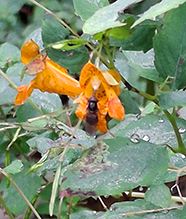 |
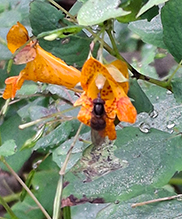 |
|
| Beetle on jewelweed |
|
|
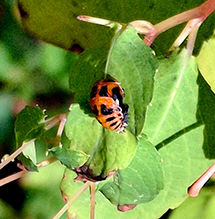 |
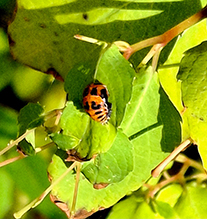 |
|
A favorite of bumblebees and hummingbirds. This has become my favorite flower of the summer. |
||
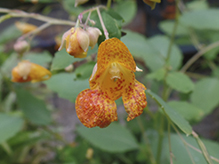 |
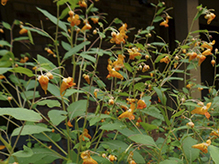 |
|
Alfredo Colon |
||
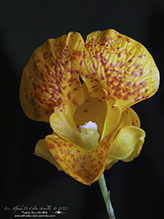 |
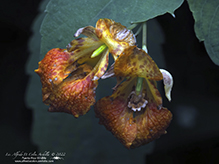 |
|
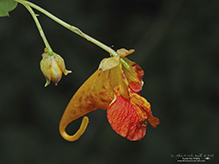 |
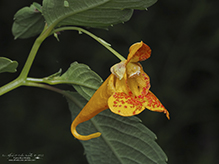 |
|
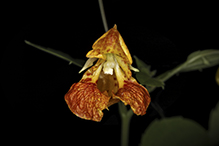 |
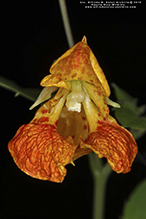 |
|
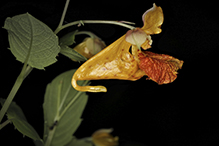 |
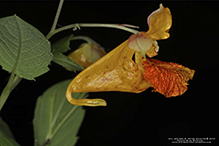 |
|
MinnesotaSeasons.com Photos
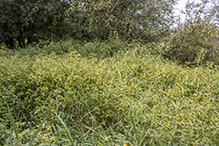 |
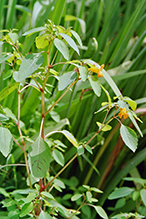 |
|
Colony |
||
|
||
|
||
|
Plant | |
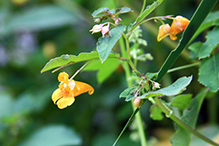 |
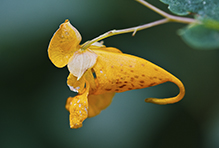 |
|
Inflorescence |
||
|
||
|
||
|
Flower | |
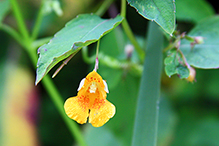 |
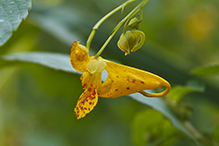 |
|
Flower |
Flower | |
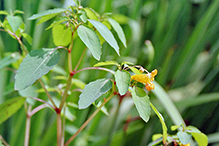 |
||
Leaves |

Slideshows
Orange Balsam
Wez Smith
Jewelweed
DianesDigitals
Spotted Touch-Me-Not (Impatiens capensis)
Andree Reno Sanborn
Impatiens capensis (Spotted Jewelweed)
Allen Chartier

Visitor Videos
Share your video of this plant.
This button not working for you?
Simply email us at info@MinnesotaSeasons.com.
Attach a video, a YouTube link, or a cloud storage link.
Other Videos
Spotted Touch-Me-Not seed pod exploding
CitraBenzoet's channel
A01 Impatiens Capensis Séquence 2-Autres plantes.m4v
Jean Désorcy
Natural Cure for Poison Ivy - Jewelweed/Impatiens capensis [Plant Identification]
BlackOwlOutdoors

Visitor Sightings
Report a sighting of this plant.
This button not working for you?
Simply email us at info@MinnesotaSeasons.com.
Be sure to include a location.
Minnesota Seasons Sightings
Avon Hills Forest SNA, North Unit
Carpenter St. Croix Valley Nature Center
Cedar Creek Ecosystem Science Reserve
Charles A. Lindbergh State Park
Clifton E. French Regional Park
Lake Alexander Woods SNA, South Unit
Margherita Preserve-Audubon Prairie
Mary Schmidt Crawford Woods SNA
Minnesota Valley NWR, Rapids Lake Unit
Northern Tallgrass Prairie NWR, Rengstorf Unit

